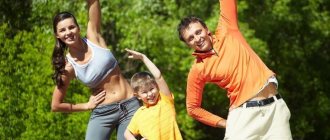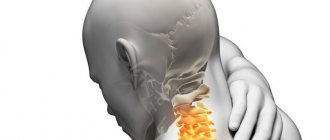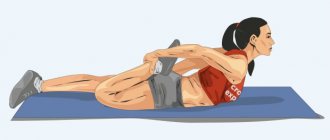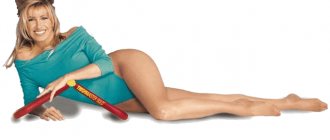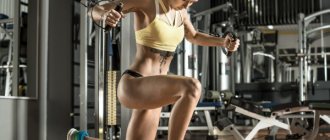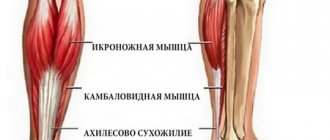Most parents and grandmothers strive to feed their babies, because they need to grow and gain strength. But not many of them know that excessive food consumption can harm the child and can sometimes be worse than starvation.
Grandmothers love and know how to cook high-calorie breakfasts, lunches and dinners. But excessive consumption of various goodies can lead to excess weight. Another problem has become how modern children spend their free time. Most often they sit at computers or on phones without any physical activity. And only when the problem becomes obvious to others, relatives begin to ask the question: “how to help a child lose weight and what actions need to be taken?” But the baby was barely 5-6 years old.
Excess weight is a problem
When a child is small, you just want to kiss his chubby cheeks and folds. And when he grows up, excess weight becomes a problem. What are the real causes of excess weight in preschoolers?
- The child eats inappropriate food. His menu often includes fast food and convenience foods. It seems that it’s easier for an adult to cook less, but all this will later affect the health of your child;
- irregular and incorrect meals. Very often, children do not have breakfast, but live on snacks between lunch and dinner. And it happens that a child simply eats up before bed;
- minimal or no physical activity. Modern children move very little, because gadgets have become their main hobbies;
- stress;
- bad heredity. It often happens that the baby’s parents are prone to being overweight, then there is a possibility that the baby will also suffer from excess weight;
- Diseases (congenital or acquired). Often problems with the gastrointestinal tract lead to obesity;
- hormonal imbalances in the body. Typically, at the age of 10-12, children begin adolescence and a surge in hormones can cause obesity problems.
Many people believe that excess weight is simply excess fat under a layer of skin. But in fact, obesity impairs many body functions.
- the functioning of internal organs is disrupted. The heart and endocrine system, stomach, intestines and liver suffer;
- Overweight children develop flat feet. They often slouch, and because of this, curvature of the spine develops;
- children suffer from excessive sweating;
- overweight children suffer from skin rashes more often than others;
- Psychological problems also develop. Overweight children are often not accepted by the children's team. Fat people spend a lot of time alone, they develop an inferiority complex and may become depressed;
- Girls puberty occurs earlier than usual.
How to motivate overweight kids to lose weight
Teenagers understand that being overweight can cause a lot of problems. Therefore, many teenagers strive to lose weight on their own. But how to explain to a 7-9 year old child that he must change his lifestyle, give up his usual menu and start playing sports regularly. At this age, boys and girls do not yet have sufficient self-control. However, there are some practical tips on how to motivate elementary school children to lose weight.
- Be an example for your child. Start doing exercises in the morning together, have oatmeal for breakfast and give up processed foods. Agree, this will make it easier to convince your child to follow a healthy lifestyle;
- turn the process of losing weight into a game: start a competition to see who can lose weight the fastest. Let it be a competition between mom and dad to begin with. And then invite your son or daughter to take part.
- children love to help adults. Ask your baby for help and support. Tell him that mom or dad simply can’t cope without him;
- Offer some gift to your child for the achieved result. For example, as soon as the arrow on the scale shows 1-2 kg less, buy him a bicycle or skates. You can also go to the mountains for the weekend with the whole family. Make sure that the reward is useful and does not harm the weight loss process;
- Let every kilogram you lose be a holiday. Explain to your baby that this is good for his health and that he can handle it just fine.
Training program for teenagers
Adolescence is the period between childhood and adulthood characterized by puberty. Puberty for girls begins at 9-10 years, and for boys at 11-12 [1]. Puberty ends at different times, but at the age of 16-18, according to relevant scientific data, it is already possible to train according to adult patterns [2]. That is why the training program for teenagers is limited to the time period from 9-11 years to 16-18. Why? Because the intensity of skeletal growth varies among people, which is why some people have a fully formed skeleton at the age of 16, while others are still developing [1]. If a person begins to grow rapidly later in life and sees that he is still growing, then he should continue with the training program for teenagers.
Why do you need a training program for teenagers? Then, adequate physical activity and proper nutrition will help a person maximize their potential in growth [1], development of the cerebral system [3], [4] and skeletal muscles [5], as well as avoid teenage depression [6], socialize [ 7] and maintain maximum health [8]. But a training program for teenagers should not be exclusively strength training [2]. In general, all people need cardio training, but for teenagers, strength training should not be a target at all, but should remain part of the training program. It should also include other sports, such as swimming. And don’t forget that it’s especially important for teenagers to get enough and proper sleep.
Should children lose weight quickly?
Parents think that the baby will become slim within a month after starting a diet and exercise. But in fact, the rate of weight loss depends on various factors: the gender and weight of the child, his metabolism, the effectiveness of exercise and concomitant diseases.
Children usually lose weight faster than adults. Sometimes mothers speed up the weight loss process because they don’t see the desired result. But they don't understand that rapid weight loss can harm a growing body more than body fat. Poor nutrition and excessive exercise contribute to the development of diseases of the gastrointestinal tract, heart and other organs.
Here it is important to understand that in losing weight, it is not speed that is important, but a rational approach. The baby's nutrition should be such that he receives all the necessary carbohydrates, fats, proteins and vitamins. In this case, the child must receive sufficient physical activity.
It's always easier to do exercises at home with dumbbells
If you can't perform a set of dumbbells on the bench press, you can always move them to the sides. There is no need to throw them on your chest or head if you were unable to lift them. This can lead to injury, because if the muscles fail, dumbbells weighing 10, 20, 30 kg can harm you if you drop them on your body where there are no muscles. Only professional athletes sometimes put dumbbells on themselves to complete the last reps. But they already know from experience their strength and endurance potential after years of training with iron, regardless of where they train their muscles - at home or in the gym.
A sports lifestyle from school is a direct path to good health, a beautiful physique and longevity. But an incorrectly selected training program at this age can lead to serious injuries.
Balanced nutrition for weight adjustment
In order to eat rationally, it is important not only to choose the right foods, but also to eat them correctly. It is important to follow the following rules:
- eat small meals up to 6 times a day;
- Eat high-calorie foods in the morning;
- buy fresh food;
- eat slowly, chew food thoroughly. It is advisable to turn off the TV and put away the book/gadget or foreign objects that distract you;
- Don't use meals as rewards or punishments.
Serve food in small portions and set the table beautifully. This will make your food look bright and appetizing. Below you will find a list of foods that you should not eat or should cut down when losing weight:
Avoid:
- sweets (cakes, ice cream, candies, cookies)
- various sodas;
- fast food, chips and crackers;
- shelf-stable products;
- products with dyes and additives;
- fried and smoked
Reduce your use:
- of bread;
- fresh milk;
- potatoes;
- nuts and dried fruits;
- fatty meats;
- canned foods;
- Fruit and dark chocolate;
- pasta;
- salt
Products for losing weight:
- raw and stewed vegetables;
- cereals (with a little added oil)
- chicken, rabbit, beef, turkey (stewed, boiled, baked);
- egg yolks;
- low-fat varieties of fish (stewed, boiled, baked);
- unsweetened fruits (raw or baked);
- fresh juices;
- compotes (from fruits and dried fruits);
- vegetable soups;
- unsweetened and low-fat fermented milk products.
Examples of training plans by day
Systematic exercises at home can be no less effective than training in the gym. Let's look at an example program that uses all major muscle groups. Let's start with a warm-up:
- First of all, five to seven minutes of light jogging or walking.
- Now we stop, feet still shoulder-width apart, arms along the body. Slowly turn your head completely to the left, then to the right. Repeat 6 times in each direction.
- Place your fingers on your shoulders and spread your elbows to the sides. Make rotational movements outward and inward 10-15 times.
Having completed the warm-up, we proceed to the main exercises:
- Let's start with squats. You need to squat down 10-15 times until parallel to the floor, this will help avoid additional stress on the joints. In this case, the back should remain straight, feet shoulder-width apart, and hands on the belt or in front of you.
- Next comes the traditional pull-up on the bar. 5-10 times will be enough. The correct technique for performing pull-ups can be seen in this video (https://www.youtube.com/watch?v=eMsTT1uajTY).
- 10-15 push-ups with your body as straight as possible and as low as possible. Without following the technique, exercises are meaningless.
- The next exercise is “bicycle”. Lie on your back, arms along your body. Raise your knees bent so that you form a right angle with your body. Rotate your legs 30-40 times, simulating pedaling a bicycle.
You need to complete the complex with stretching:
- Get on all fours on the mat and bend your back down and up ten times.
- Then sit on the floor and spread your legs as wide as possible without straightening them. Take turns leaning left, right and forward. Repeat 10 times.
- Lie on your back and bend your knees. Then slowly raise and lower your pelvis 10 times, holding it for ten seconds in the upper position.
At this point the exercises are over - you can catch your breath and return to your business.
Charging for the whole family
Exercise should become a daily routine for the whole family. Agree, it’s not so easy to persuade a baby to do physical exercises in the morning if dad is lying on the couch watching TV. Start with a few exercises, and then you can increase the physical activity.
If your son or daughter needs help with exercise, help him. Later you can ask your child to help you.
What exercises can you do?
It is recommended that teenagers perform strength exercises only with their own weight, as additional load can slow down bone growth. The simplest exercises include:
- Knee push-ups are an easier version of classic push-ups. In this version, the load falls on the knees, and the shins need to be raised and the toes extended. This exercise strengthens the pectoral muscles and arms. Fast execution forms the relief, slow execution creates a toned appearance.
- “Plank” is a static exercise, during which it is important to hold the body correctly. To assume the position, lie on the floor with your stomach down, bend your elbows at right angles and go into a lying position. The “plank” uses more than just your abdominal muscles, so after 30 seconds in this position you will feel trembling throughout your body.
- Lunges are an effective exercise for working the thighs and buttocks. Place your legs parallel to each other, straighten your back and tuck your stomach. Maintaining this position, take a long step forward, bending your knee and placing your weight on your extended leg. Return to the starting position.
Weekend in nature
During the period of losing weight, it is extremely important to spend time in the fresh air. If you see that your child has problems with excess weight, then going outdoors should become a favorite hobby for your family. In the summer, you can go to bodies of water, because swimming is the best way to burn extra calories. In general, visit different places to make it interesting for your child.
Your son or daughter should perceive an outing into nature as a relaxation and a joyful event. They should expect it and rejoice every time. Remember also that family outings will bring your family together and improve the health of each of you. And the child will be happy that he spends such interesting and fun time with mom and dad.
Leisure
Going out into nature does not mean having a get-together, as many people think. This way, excess weight will never leave you. Ride your bike to the park, take a ball to the pond, and look for mushrooms in the forest or organize a competition.
In winter you can go skiing or skating, play snowballs or build a snowman. If you decide to go outside for a short time, do not take a car, but just walk.
Exercises for losing weight
Today you can easily fight extra pounds at home. There are many complexes and exercises on the Internet that help girls and boys of different ages lose weight.
- walking in place (need to be repeated for 2-3 minutes);
- running in place (3-4 minutes);
- squatting and jumping (to begin with, do 4 times, and then you can gradually increase)
- Jumping on a small chair;
- exercises with dumbbells.
Start doing the exercises 2-3 times a week for 15 minutes. This way, physical exercise should become a habit and you will do it automatically in the morning.
Age for fitness training at home and in the gym
Everyone who starts playing sports has different ages. Some people start training from an early age. Basically, all teenagers begin to engage actively, pursuing a specific goal, at the age of 11-17 years, joining sports (fitness, exercises with barbells, dumbbells and other fitness equipment that transforms the figure). It can also be a home universal fitness machine of a block format, where you can perform many exercises at once for different muscle groups (for example, back, legs, triceps, biceps, abs). The main thing is to know the correct approach to such simulators, and then you can replace dumbbells and barbells with a universal simulator.
But it is not always possible to do everything on it, since there are different exercises that involve one muscle group (basic), while others involve more than two or three muscle groups (isolated). Basically, up to 30 exercises can be performed on universal simulators, depending on the design of the simulator and its block levers.
When to see a specialist:
Sometimes a parent cannot cope with a child’s excess weight on their own. In this case, you need to contact a specialist who will tell you what to do and where to start. Such cases include:
- a situation where excess weight exceeds 50% of normal weight;
- the child is gaining weight rapidly for no apparent reason;
- the baby was diagnosed with problems with the gastrointestinal tract, heart muscle and endocrine system;
- Excess weight causes depression;
- the baby began to feel unwell;
- after a little physical exercise, shortness of breath, rapid heartbeat, headache and abdominal pain appeared.
As you can see, not only adults, but also children can suffer from excess weight. Overeating can be just as dangerous as fasting. It is imperative for parents to find a balance between both. Try to be a faithful friend to your baby and support him during the period of weight loss. Don't laugh at him or reproach him. Today, a huge number of children suffer from excess weight, begin to lose weight, do it incorrectly and get serious illnesses. If you are not sure if you are losing weight correctly, consult a good nutritionist. Today, specialists are able to develop an individual menu for your child and select a set of exercises. Remember that the main thing in this matter is patience and systematicity. You can’t lose weight by playing sports and eating chocolate during breaks; and you can’t lose excess weight while sitting at the computer.
Workouts for beginner teenagers
A few rules for effective training
- Any workout must begin with a warm-up.
- Beginning teenagers need, first of all, to master the technique of performing exercises and only then can they think about increasing the pace or load.
- Teenagers 12-15 years old should not perform exercises that deform the spinal column (press press, squats with a barbell, etc.). High risk of injury.
- It is important to feel the muscles during the exercise, this is the only way you can understand how intensely you are working the muscle group.
- It is necessary to master breathing techniques. Do not hold your breath under any circumstances, try to breathe smoothly, relax as you inhale and do the exercise as you exhale.
- It is important to take breaks between approaches, as well as combine training days with rest days. Remember that muscles need time to recover.
- You need to supplement the set of exercises with weights starting with the minimum weight.
- After training, you need to do a cool-down and stretching.
- Strength training should not last more than an hour.
- Teenagers are advised to go to the pool - it develops muscles and relieves stress on the spine. By the way, our club on Veteranov has the largest swimming pool in St. Petersburg!
